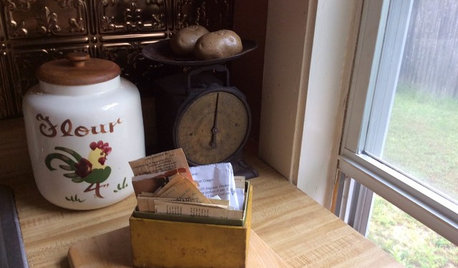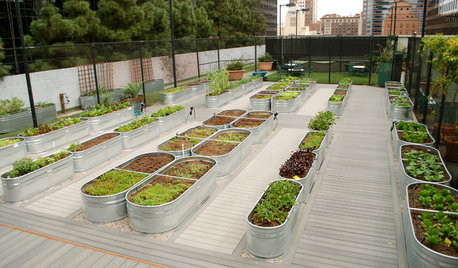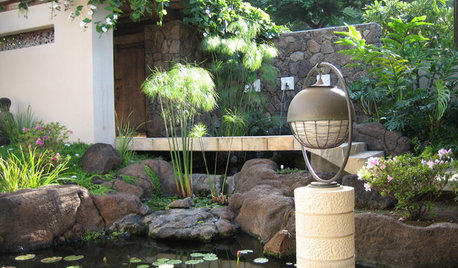Basic pickle recipe
KimHat
11 years ago
Related Stories

KITCHEN DESIGN5 Home Cooks Share Their Favorite Family Recipes
Peek inside the kitchens of these Houzz users and learn how to cook their time-tested, passed-down dishes
Full Story
LANDSCAPE DESIGNRecipe for Modernist Edible Garden Style
Herbs, vegetables and fruit trees aren’t just for traditional gardens. Here’s how to design them into modernist landscapes
Full Story
KITCHEN DESIGNWorld of Design: Favorite Recipes From Food Lovers Around the Globe
Travel with your tastebuds and experience for yourself these international foodies' favorite dishes
Full Story
LANDSCAPE DESIGNRecipe for Asian Edible Garden Style
A surprising number of food plants are hiding out in Asian-themed landscapes. Add a few more and extend the Zen flavor to the kitchen
Full Story
BEDROOMS9 Design Recipes for a Peaceful Bedroom
Find your bliss in these dreamy, relaxing sleep spaces
Full Story
GREEN BUILDINGHouzz Tour: Pickle Factory Now an Energy-Wise Live-Work Space
A charming but poorly insulated 1880s Philadelphia commercial building becomes a spacious energy-efficient home and studio
Full Story
BUDGET DECORATINGBudget Decorator: 8 Ways to Make Old Furniture Look Brand New
Learn stripping, staining, painting and reupholstering basics to make bargain-basement furniture worthy of center stage at home
Full Story
KITCHEN DESIGNHouzz Call: What’s Cooking in Your Kitchen?
Most of us turn to recipes, videos and culinary shows when we cook. Where do you set your cookbook, tablet or TV screen?
Full Story
HEALTHY HOMEHow to Childproof Your Kitchen
Knives, cords and chemicals can be a recipe for disaster around babies. Here’s how to make your kitchen safer for kids
Full Story
FARM YOUR YARDHow to Grow Vegetables in Containers
Get glorious vegetables and fruits on your patio with a pro’s guidance — including his personal recipe for potting mix
Full Story





digdirt2
readinglady
Related Professionals
Beavercreek Landscape Architects & Landscape Designers · Roxbury Crossing Landscape Architects & Landscape Designers · Arlington Landscape Contractors · Essex Landscape Contractors · Lewisville Landscape Contractors · Middle River Landscape Contractors · Parker Landscape Contractors · Pompton Lakes Landscape Contractors · Markham Landscape Contractors · East Norriton Landscape Contractors · Rome Roofing & Gutters · Staten Island Roofing & Gutters · Marietta Roofing & Gutters · Sauk Village Roofing & Gutters · Welby Roofing & GuttersKimHatOriginal Author
digdirt2
readinglady